When it comes to interior design, It’s the little details that can make A big difference. One such detail that often goes unnoticed but plays a crucial role in both aesthetics and functionality is cabinet knobs. These seemingly small additions can enhance the overall look of your cabinets and drawers while also providing a convenient grip for opening and closing them. However, it’s not just about choosing the right style and finish for your cabinet knobs; their placement is equally important. In this article, we’ll delve into the significance of proper cabinet knob placement and guide you on where to strategically position them for maximum impact. So, if you’re looking to elevate your interior design game and create a cohesive and functional space, read on to discover the secrets of cabinet knobs place.
What Are Cabinet Knobs?

Cabinet knobs are decorative and functional hardware components that are attached to the surface of cabinets and drawers. They serve as handles or pulls, allowing users to easily open and close cabinets and access their contents. Cabinet knobs come in A wide range Of styles, shapes, sizes, And finishes, Making them A versatile element in interior design. Whether you prefer sleek and modern knobs or ornate and traditional ones, there’s a vast selection available to suit your personal taste and complement your overall decor. These small but impactful accessories can add A touch of elegance, charm, or even A contemporary flair to your cabinets, transforming the look and feel Of your space.
The Benefit Of Right Use Cabinet Knobs
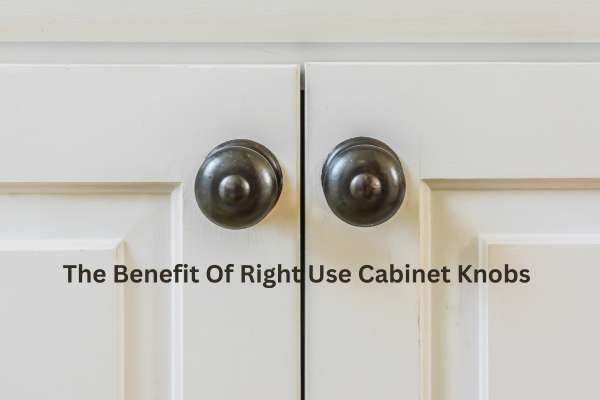
Improved functionality
Cabinet knobs provide a convenient and ergonomic grip, making it easier to open and close cabinets and drawers. This is especially beneficial in high-traffic areas such as kitchens And bathrooms where quick And effortless access to storage is essential.
Enhanced aesthetics
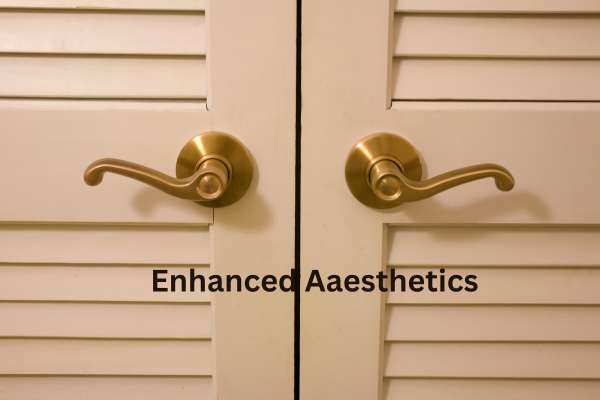
Cabinet knobs can significantly enhance the overall aesthetics of your cabinets. With A wide variety of styles, shapes, And finishes available, You can choose knobs that match or complement your existing decor. This allows you to add A touch of personality And style to your space, creating A cohesive And visually appealing look.
Instant facelift
Updating your cabinet knobs can instantly refresh the appearance of your cabinets without the need for a complete overhaul. Whether you’re looking to modernize outdated cabinets Or add a unique accent to your furniture, Swapping out old knobs for new ones can make A dramatic difference And breathe new life into your space.
Versatility
Cabinet knobs are not limited to kitchen cabinets. They can Be used in various areas Of the home, including bathrooms, bedrooms, closets, And even furniture pieces like dressers And sideboards. Their versatility allows you to maintain a consistent design theme throughout your home.
Personalization
Cabinet knobs offer an opportunity for personalization. By choosing knobs that reflect your personal style, you can infuse your own unique touch into your interior design. Whether you prefer classic, contemporary, vintage, or eclectic aesthetics, there are cabinet knobs available to suit every taste.
Cost-effective upgrade
Upgrading your cabinet knobs is a cost-effective way to give your cabinets a fresh and updated look. Compared to other renovation options, such as replacing entire cabinets or refinishing surfaces, swapping out knobs is a relatively affordable and straightforward solution.
Easy installation
Cabinet knobs are typically easy to install, requiring minimal tools and effort. This means you can quickly and effortlessly update your cabinets without the need for professional assistance.
Resale value
Attention to detail, including the use of high-quality And well-placed cabinet knobs, Van increase the resale value Of your home. Potential buyers often appreciate well-designed and functional spaces, and the right choice of cabinet knobs can contribute to a positive first impression.
Organizational benefits
Cabinet knobs can also serve as functional organizers. For example, using different styles or colors of knobs to distinguish between different types of cabinets or drawers can help with organization and make it easier to find specific items.
Timeless appeal
While trends may come and go, certain styles of cabinet knobs have a timeless appeal. Opting for classic and versatile designs can ensure that your cabinets remain stylish and relevant for years to come.
Understanding Cabinet Knobs
1. Purpose Of Cabinet Knobs
Cabinet knobs primarily serve as handles or pulls, enabling easy and convenient access to cabinets and drawers. They provide a solid grip, allowing for smooth opening and closing motions. In addition to their functional role, cabinet knobs also contribute to the overall visual appeal of the cabinets, adding a touch of style and personality to the space.
2. Different Types Of Cabinet Knobs

The market offers a diverse array of cabinet knob styles, materials, and finishes. Traditional knobs embody classic designs, often featuring intricate details and crafted from metals like brass or bronze. Contemporary and modern knob showcase minimalist aesthetics, characterized by clean lines and materials like stainless steel or glass. Vintage-inspired knob pay homage to styles from the past, utilizing materials such as ceramic or porcelain. For those seeking unconventional options, eclectic knob present unique shapes and creative combinations of materials.
3. Factors To Consider When Choosing Cabinet Knobs
When selecting cabinet knobs, several factors should be taken into consideration:
Design Style: Ensure that the chosen knob harmonize with the overall design style of the space, be it traditional, modern, rustic, or eclectic.
Materials and Finishes: Consider the materials and finishes of the knob, ensuring they complement the cabinet material and other hardware elements present in the room.
Size and Proportions: Opt for knobs that are proportionate to the size of the cabinets and drawers, maintaining visual balance and cohesion.
Ergonomics: Pay attention to the comfort and ease of use offered by the knob, considering factors such as grip size and shape.
Durability: Select knob made from durable materials to ensure they can withstand regular use and maintain their appearance over time.\
Budget: Set a budget and explore options within that range, balancing quality, aesthetics, and cost-effectiveness.
Functionality And Ergonomics
1. Cabinet Type And Location

Consider the type and location of the cabinets when selecting cabinets knob. Different cabinets, such as upper cabinets, lower cabinets, or drawers, have varying functional requirements. For upper cabinets, the focus may be more on aesthetics, while lower cabinets may benefit from sturdier knobs that can withstand heavier items. Additionally, consider the accessibility of the cabinets based on their height and location within the room.
2. Hand Dominance And Accessibility

Take into account hand dominance when choosing cabinet knobs. If the majority of users are right-handed, it may be more convenient to place the knob on the right side of the cabinets for easy access. Similarly, left-handed users may prefer knob on the left side. Assess the accessibility and ease of use for all users, ensuring that the knobs are comfortably within reach for a smooth user experience.
3. User Height And Comfort

Consider the height of the users who will be using the cabinets. Adjust the placement of the knob accordingly to ensure that they are within a comfortable reach for individuals of different heights. Knob placed too high or too low can lead to discomfort and strain. Aim for a height that allows for a natural and ergonomic hand position when opening or closing the cabinets.
Design Considerations
1. Coordinating Cabinet Knobs With Overall Design Style
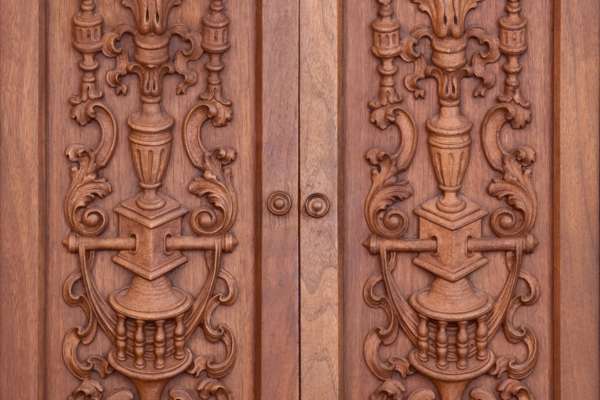
When selecting cabinet knobs, consider the overall design style of your space. Choose knobs that complement and enhance the existing aesthetic. For example, if you have a traditional kitchen, opt for knob with classic designs and finishes. In a modern or minimalist setting, sleek and simple knob would be more appropriate. Ensuring harmony between the cabinets knob and the overall design style creates a cohesive and visually pleasing look.
2. Symmetry And Balance
Achieving symmetry and balance in the placement of cabinet knob can contribute to a visually pleasing design. For instance, if you have a row of cabinets or drawers, consider aligning the knobs vertically or horizontally for a balanced appearance. Symmetry can create a sense of order and organization in your space.
3. Proportions And Scale
Take into account the proportions and scale of the cabinet knob in relation to the size of the cabinets or drawers. Larger cabinets may require larger knobs to maintain visual balance, while smaller cabinets or drawers may be better suited for smaller and more delicate knobs. Consider how the size of the knob complements the size of the cabinets or drawer, ensuring that they neither overpower nor get lost in the overall design.
4. Harmony With Other Hardware And Finishes
Consider the other hardware elements and finishes in the room, such as faucets, lighting fixtures, and appliances. Aim for harmony by selecting cabinets knob that coordinate with these elements. For example, if you have stainless steel appliances, choosing stainless steel knobs can create a cohesive look. Pay attention to the finishes and materials of other hardware pieces, ensuring that they complement or match the cabinets knob for a unified design scheme.
Practical Guidelines For Placement
1. Adjusting Placement Based On Individual Needs And Preferences
When it comes to placing cabinet knob, it’s important to consider the individual needs and preferences of the users. Everyone has different hand sizes and heights, so the placement should be adjusted accordingly. Experiment with different positions and heights to find the most comfortable and ergonomic placement for easy access. Take into account the natural reach and hand movement for a seamless user experience.
2. Tips For Positioning Knobs On Different Types Of Cabinets
A. Upper Cabinets
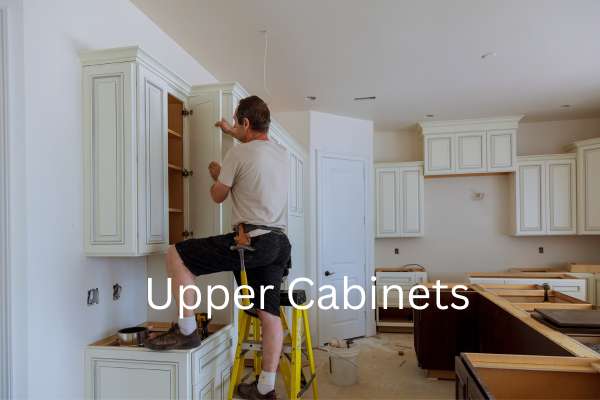
- Place the knobs on the lower corner of the upper cabinet doors for easy gripping and pulling downward motion.
- Consider aligning the knob vertically or horizontally with the surrounding cabinets for a visually cohesive look.
- Adjust the placement based on the height of the users to ensure comfortable access.
B. Lower Cabinets
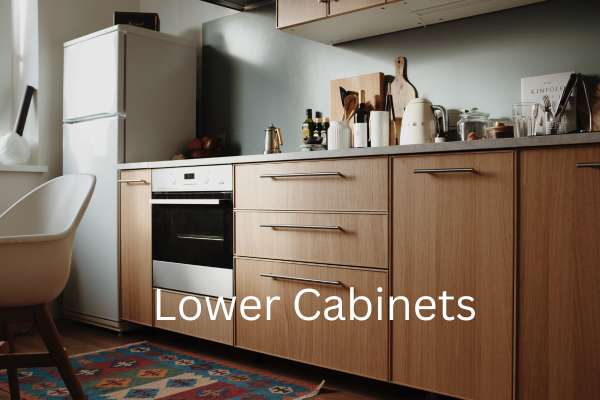
- Position the knobs on the upper corner of the lower cabinets doors to allow for a natural gripping and pulling motion.
- Align the knob vertically or horizontally for symmetry and balance.
- Adjust the height of the knob to accommodate the comfort and reach of the users.
C. Drawers And Pull-Outs
- Place the knob in the center of the drawer front for easy and balanced pulling motion.
- Ensure that the knobs are positioned at a height that allows for a comfortable grip, considering both standing and seated users.
- Consider the width of the drawer and the space available for hand placement when positioning the knob.
Tools And Techniques For Accurate Placement
1. Measuring And Marking Techniques For Precision
To achieve accurate placement of cabinet knob, use measuring tools such as a tape measure or ruler to determine the desired distance from the edge or center of the cabinet. Mark the exact placement using a pencil or removable tape. Double-check measurements and alignment before drilling or attaching the knob to ensure precision.
2. Using Templates And Jigs For Consistent Placement
To achieve consistent placement across multiple cabinets or drawers, consider using templates or jigs. Templates are pre-made guides that help mark the exact positions for knob installation. Jigs are tools that can be clamped or secured to the cabinets, providing a guide for drilling holes or attaching knob at consistent intervals. Using templates and jigs can save time and ensure uniformity in placement.
3. Adjusting Placement Based On Cabinet Material And Construction
Different cabinet materials and construction methods may require adjustments in knob placement. For example, if you have cabinets with a thick frame or panel, you may need to offset the knob placement slightly towards the center to avoid interference. Be mindful of the specific characteristics of your cabinets and make necessary adjustments to achieve optimal placement.
4. Best Practices For Installation To Ensure Durability
When installing cabinets knobs, follow these best practices to ensure durability and longevity:
- Use appropriate screws or fasteners that are suitable for the thickness and material of the cabinet.
- Pre-drill pilot holes to prevent splitting or cracking of the cabinet material.
- Tighten the screws securely, but avoid overtightening to prevent damage.
- If applicable, use adhesive or additional reinforcement to strengthen the attachment of the knob.
- Regularly inspect and tighten the knob over time to maintain their stability.
Addressing Challenges In Knob Placement
When placing cabinet knob, several challenges may arise that can impact the accuracy and consistency of their placement. Uneven or irregular cabinet surfaces can make it difficult to achieve consistent positioning, but using templates or measuring multiple points can help. Hidden hardware or obstructions behind the cabinet surface require careful inspection and adjustment of knob placement. Custom or non-standard cabinets may necessitate consulting a professional for guidance. Pre-existing holes or marks can be covered with larger base knobs or filled with putty. Ensuring consistency across multiple cabinets can be achieved with the use of templates or jigs. By addressing these challenges, you can overcome obstacles and achieve precise and visually pleasing knob placement that enhances the functionality and aesthetics of your cabinets.
Solutions For Common Placement Mistakes And How To Fix Them
Placement mistakes occur with cabinet knob, there are solutions to rectify them. If knobs are uneven or misaligned, they can be removed and repositioned using a measuring tool or template for consistent spacing. Knobs placed too close to or far from the cabinet edge can be fixed by filling old holes with wood putty, sanding them down, and repositioning the knob at the desired distance. Inconsistent knob placement across cabinets can be resolved by creating a template or jig for alignment. Mismatched knob heights can be corrected by repositioning them at the same height using measuring tools or templates. By taking these corrective actions, a well-organized and visually pleasing cabinet layout can be achieved, enhancing both functionality and aesthetics.
The Final Thoughts
The placement of cabinet knob plays a crucial role in the overall aesthetics and functionality of your space. By considering key factors such as functionality, ergonomics, design style, symmetry, proportions, and harmony with other hardware and finishes, you can achieve a well-designed and cohesive look. We discussed the significance of adjusting knob placement based on individual needs and preferences, as well as practical guidelines for different types of cabinets. Additionally, we highlighted tools and techniques for accurate placement and addressed common placement mistakes and their solutions. Now, it’s your turn to apply these guidelines and create aesthetically pleasing and functional cabinet knob placement in your own spaces. Take the time to measure, plan, and implement these strategies to elevate the look and usability of your cabinets. With careful attention to detail, you can transform your cabinets into stylish and efficient storage solutions. Happy decorating!
